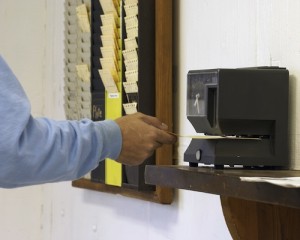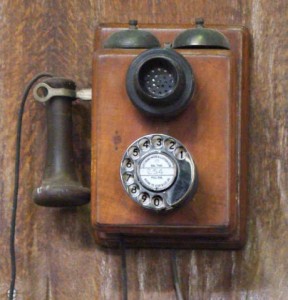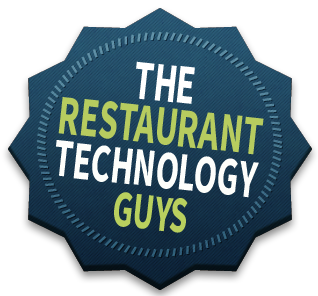
Remember these?
In the hospitality industry, particularly the restaurant biz, loss prevention is a pretty big deal. And it goes beyond just money. Inventory, recipes, food, time – many things are at risk if you have sneaky employees – and those things can add up to big bucks.
Successful and conscientious restaurateurs are very selective with what (and whom) they choose to bring into their establishments. But if you have experienced theft or a security breach in your store, loss prevention is top of mind. Biometrics may be just the thing to eliminate loss due to theft, mistake, or misuse, and provide a quick ROI.
Biometrics has been around since the 1990s, and like most technology, the longer it’s around, the more 1) it advances and and 2) costs decrease, making it a less-risky-more-affordable option.
With overall advances in restaurant technology (as well as how it streamlines processes, promotes efficiency, increases customer satisfaction, and virtually eliminates server error), biometrics is being introduced into more and more restaurants and makes a perfect compliment to your POS system.
How do biometric devices work?
As opposed to the old key, swipe card, or passcode methods of clocking in and using the register, biometrics uses human characteristics to authenticate users who wish to gain access into computers and security systems. The users’ activity can then be tracked and verified, and mistakes or misuse documented.
The most popular biometric devices used by restaurants are fingerprint readers and hand geometry readers. “Every time an employee clocks in or performs functions on the point-of-sale system, the biometric reader detects and compares it with the stored data, making it impossible for employees to share access.” (source: QSR Magazine)
Restaurateurs cannot deny the benefits of strict record-keeping, employee accountability, and more efficiency in their restaurants. Biometrics also:
 Are there any downsides to biometrics in your restaurant?
Are there any downsides to biometrics in your restaurant?
Short answer: not that we can find. Biometrics are now super affordable and really all they do is benefit you and your company.
Every restaurant owner we’ve heard of who has made this investment has called it a complete no-brainer and wondered how they ever lived without it. See for yourself – install a biometrics system as an add-on to your POS system and see how your business changes. We recommend Crossmatch. (And if you need a POS system as well, we recommend POSitouch.)
 Remember the olden days when you had to use a pay phone or wait until you got to your destination to call someone? When was the last time you sent (or received) a handwritten letter? And if you couldn’t remember the name of that famous actor in that movie? Well, you’d just have to go to bed that night hoping your subconscious would wake you up with the answer.
Remember the olden days when you had to use a pay phone or wait until you got to your destination to call someone? When was the last time you sent (or received) a handwritten letter? And if you couldn’t remember the name of that famous actor in that movie? Well, you’d just have to go to bed that night hoping your subconscious would wake you up with the answer.
Though you may have a love-hate relationship with it (you may even consider yourself a Luddite), we’re pretty sure you’ll agree that overall, technology is a good thing. It is responsible for countless advances in medicine, science, travel, manufacturing, law enforcement, IT – and fields we didn’t even know existed. It has saved lives, made jobs easier, allowed for instant communication, and made our homes, neighborhoods, and country safer.
 We love technology. But every good thing has its price. Sadly, there are always nasty people who come along and try to ruin a good thing. Hackers are out there, prowling around the internet, looking for vulnerabilities so they can steal credit card data and other sensitive information for their greedy, fraudulent schemes.
We love technology. But every good thing has its price. Sadly, there are always nasty people who come along and try to ruin a good thing. Hackers are out there, prowling around the internet, looking for vulnerabilities so they can steal credit card data and other sensitive information for their greedy, fraudulent schemes.
As the Restaurant Technology Guys, we’re big fans of the latest and greatest technology. We love finding ways to help increase customer satisfaction, reduce staff errors, and expedite orders to increase revenue. However, as business owners, we also understand that technology should support a business, not harm it. Managing exposure to risk is a serious undertaking, and in the hospitality industry, protecting your brand reputation is of paramount importance.
According to Hospitality Upgrade Magazine, “Even if a compromise event never results in financial losses, it can still lead to a loss of customer loyalty and unfavorable brand reputation – if not dealt with quickly, thoroughly and openly” (emphasis ours). And that’s key: how you handle it.
Fortunately, there are steps you can take now to prevent a security breach, AND steps you can take in the event of a security breach that will help protect your customers and your reputation as a trustworthy establishment.
Bottom line: If integrating some new technology would benefit your restaurant, don’t let fear prevent you from doing it. Just be cautious, proactive, and honest.
Preventing a security compromise boils down to proactivity. First and foremost, regularly monitor your systems for early warning signs of a breach. Those warning signs include suspicious activity and malicious software or unusual code popping up in your system.
Here are some other important preventative measures:
Finally, set up protocols and measures you will take in the event of a security breach, so that if the unthinkable happens, you’ll be prepared to handle it like a well-oiled machine.
Shameless Plug Alert: CBS has 24/7 customer support (via phone, in-person, and in the field) by highly trained experts, as well as extensive learning opportunities for our customers to ensure optimum functionality and security of your Northstar and other systems.
Related Post: Protect and Secure Your Recipes!
TCB: Take Care of Business. No time to lose – if you have experienced a security breach, act immediately and openly.
Immediately: Take action to contain and limit the exposure of sensitive data. Begin a thorough investigation to determine the source of the breach and preserve any and all potential evidence. Follow your incident protocols.
Next: Alert all necessary parties, including your internal incident response and information security teams; your merchant bank (if applicable); and the appropriate law enforcement agency.
Now, notify your customers. You might be tempted to wait until you have more information, but it’s best to get the news of a breach to the public so customers don’t feel like you sat on the information and placed them at further risk. Plus, you want to anything that will make you look unprofessional, like the press leaking information that you haven’t yet provided.
Be transparent. Take responsibility for the security breach and express your regret. Then move onto the solution. Just as you took the blame for the compromise, now take credit for the solution. Let customers know what you are doing to remedy the problem, and what you’ll be doing to prevent it from happening again.
Put an executive on the front lines. Do not expect customers to be satisfied with a message from your IT department or lower level management. Hearing directly from the CEO or president will demonstrate that you are taking this very seriously and will help customers feel more at ease.
